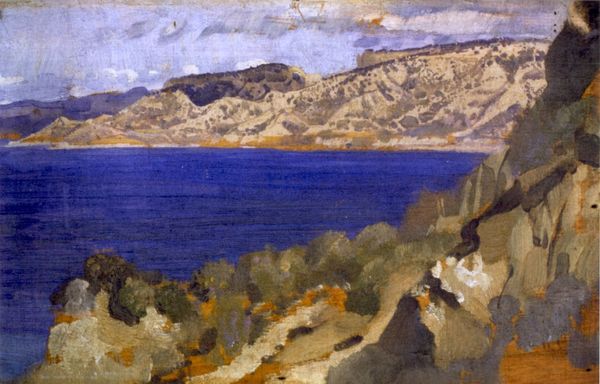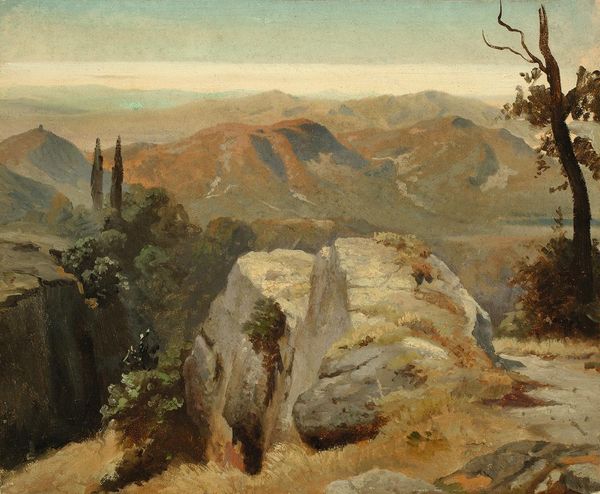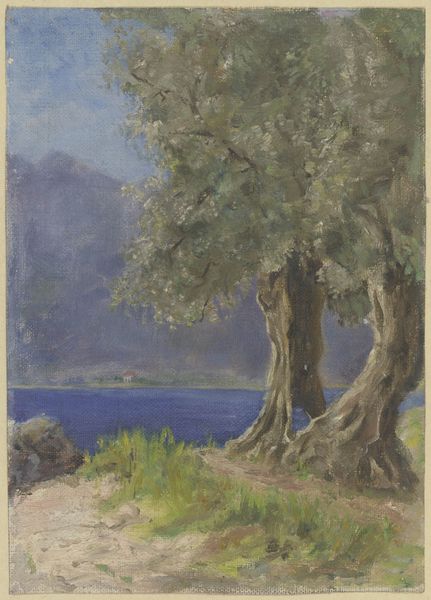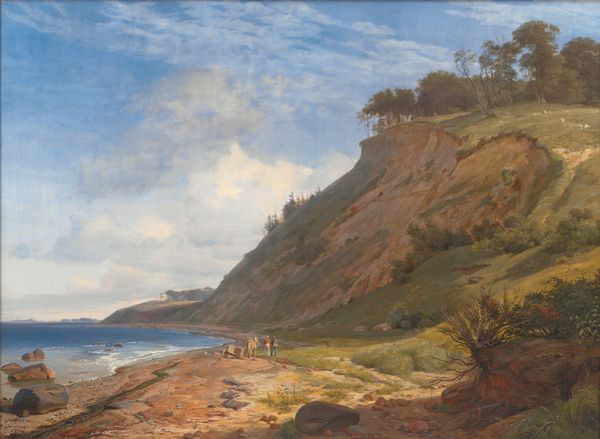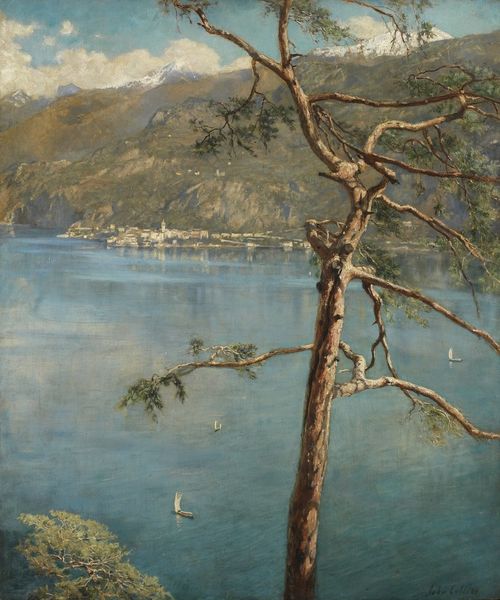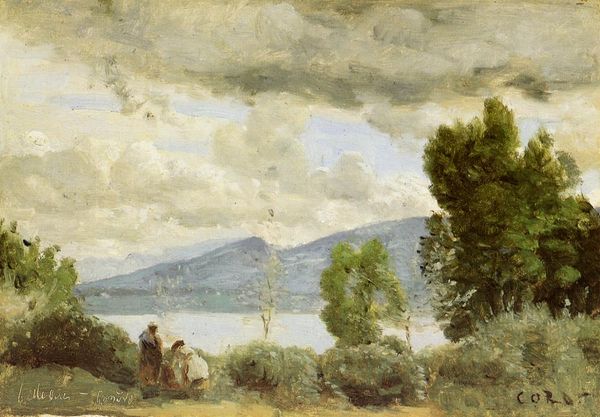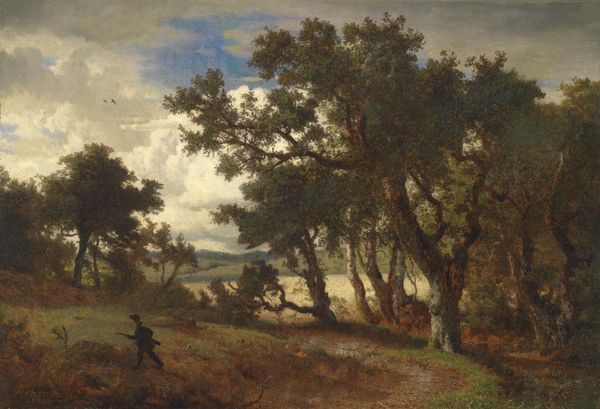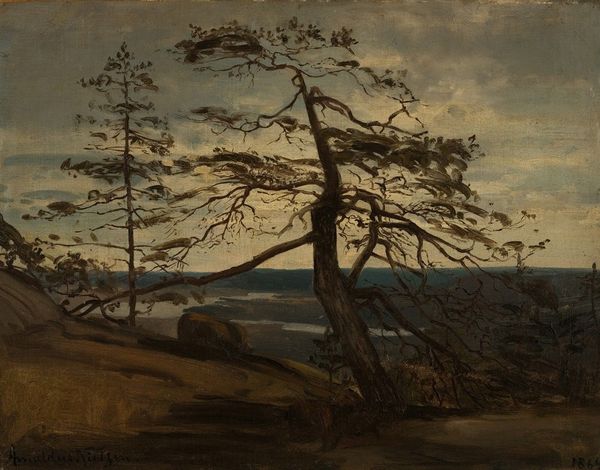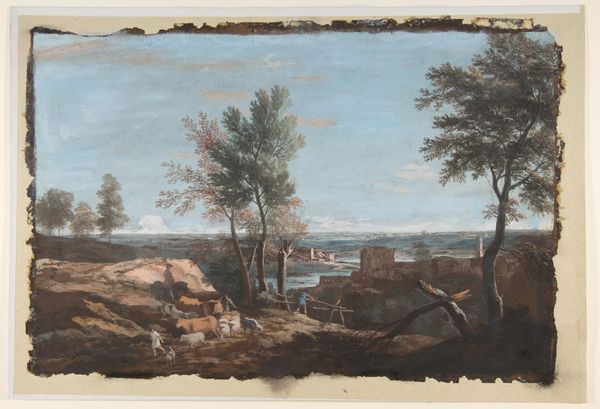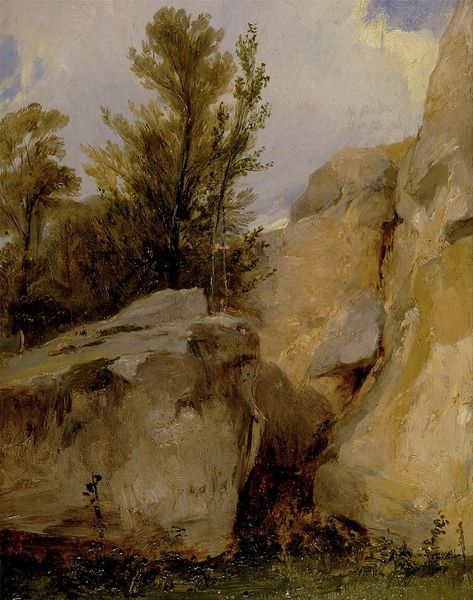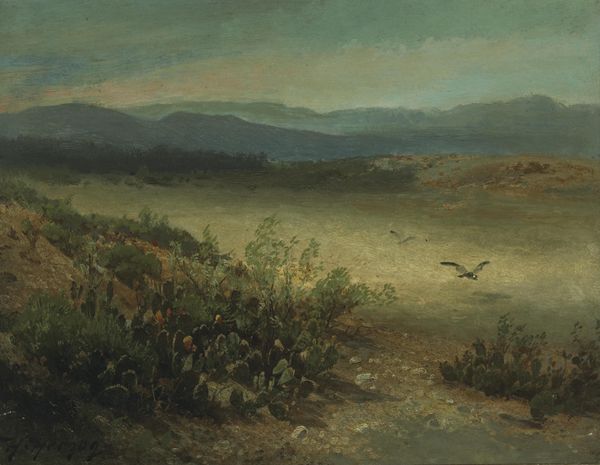
plein-air, oil-paint
#
impressionism
#
plein-air
#
oil-paint
#
landscape
#
impressionist landscape
#
oil painting
Copyright: Public Domain: Artvee
Editor: Here we have Henryk Siemiradzki's "Lake view with rocky edge", painted sometime between 1880 and 1890 using oil paint. It's a bright landscape, almost postcard-like, but the textures in the foreground feel more immediate. How do you interpret this work beyond just its pretty surface? Curator: It's crucial to look beyond the picturesque qualities and consider the historical moment. Siemiradzki was a Polish artist working within a European context grappling with colonialism and emerging national identities. How does this "idealized" landscape serve, or perhaps mask, the complex power dynamics inherent in claiming ownership and representation of a place? Editor: That’s a great point. I hadn’t considered the power dynamics involved in landscape painting at that time. What do you mean exactly? Curator: Think about it: Who has access to these landscapes? Who is able to represent them, and whose narratives are being left out? Are we seeing the land through a lens of ownership, perhaps even romanticizing a colonial gaze? The very act of painting "en plein air" also speaks to access and privilege, doesn't it? Editor: It certainly does. I was focusing on the colors and brushstrokes, but now I'm wondering who is being excluded from this beautiful view. Are there other details that might give a clue? Curator: Consider the deliberate composition – the rugged, untouched landscape foreground against the calm, blue water beyond. Does this juxtaposition imply a subtle narrative of control and possession over nature, themes quite prevalent in that era’s social and political discourse? Editor: This definitely makes me look at the painting differently. It’s no longer just a pretty view, but a statement – perhaps unconscious – about humanity’s relationship with the land. Curator: Exactly! And recognizing that potential embedded meaning is how we move beyond the purely aesthetic appreciation of art and begin to engage with its complex social and historical implications.
Comments
No comments
Be the first to comment and join the conversation on the ultimate creative platform.
